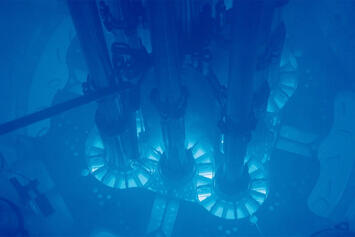
Ever since the Arab Oil Embargo of 1973, American energy policy has largely orbited around the hackneyed idea of “energy independence.”
I put that phrase in quotes because the concept has never had a clear definition or concrete goal. The idea of energy independence has been used to justify a myriad of policies including oil shale (not shale oil), corn ethanol, cellulosic ethanol, and many others. As I explained in my third book, Gusher of Lies: The Dangerous Delusions of Energy Independence, the phrase provides a “prized bit of meaningful-sounding rhetoric that can be tossed out by candidates and political operatives eager to appeal to the broadest cross section of voters...With energy independence, America can finally dictate terms to those rascally Arab sheiks from troublesome countries. Energy independence will mean a thriving economy, a positive balance of trade, and a stronger, better America.”
I went on to explain that the concept gained traction after the September 11 attacks and that many Americans got “hypnotized by the conflation of two issues: oil and terrorism” and the claim that buying oil from the Persian Gulf means that “petrodollars go straight into the pockets of terrorists like Mohammad Atta and the 18 other hijackers who committed mass murder on September 11.”
But here’s the rub: over the past 50 years (it’ll be exactly 50 years in October) the dubious concept of energy independence has only been applied to oil. No other energy commodities were given the same weight or consideration. That blindness to our reliance on foreign supply chains for critical energy commodities is about to bite back in a big way.
A looming shortage of enriched uranium and HALEU (short for high assay low enriched uranium), could derail the nuclear renaissance before it gets started. And that shortage will be particularly problematic for the United States, which operates the world’s biggest fleet of reactors and accounts for about 30% of global nuclear electricity generation.
As can be seen in the graphic below, four decades ago, the U.S. nuclear sector was largely self-sufficient in uranium and nuclear fuel supplies. In 1980, the U.S. produced a record 43 million pounds of uranium oxide. Today, it isn’t producing any uranium oxide. Over the past four decades or so, the U.S. went from being the world’s biggest exporter of nuclear fuel to its biggest importer. And much of that fuel (about 14%) is coming from Russia, the world’s biggest enricher of uranium. About 46% of the world’s enrichment capacity is controlled by Russia.
The U.S. wants to get off of Russian suppliers and a bill introduced in the Senate in March, authored by Sen. John Barrasso (R-WY) and three other Republicans, aims to prohibit imports of Russian nuclear fuel. But there are no credible scenarios that will fix the nuclear-fuel supply problem in short order. Reducing our reliance on foreign uranium supplies will likely take a decade or more if – and that’s an enormous if – Congress acts quickly to address the problem.
Read the rest of this piece at Robert Bryce Substack.
Robert Bryce is a Texas-based author, journalist, film producer, and podcaster. His articles have appeared in a myriad of publications including the Wall Street Journal, New York Times, Forbes, Time, Austin Chronicle, and Sydney Morning Herald.
Photo: courtesy Robert Bryce Substack.












